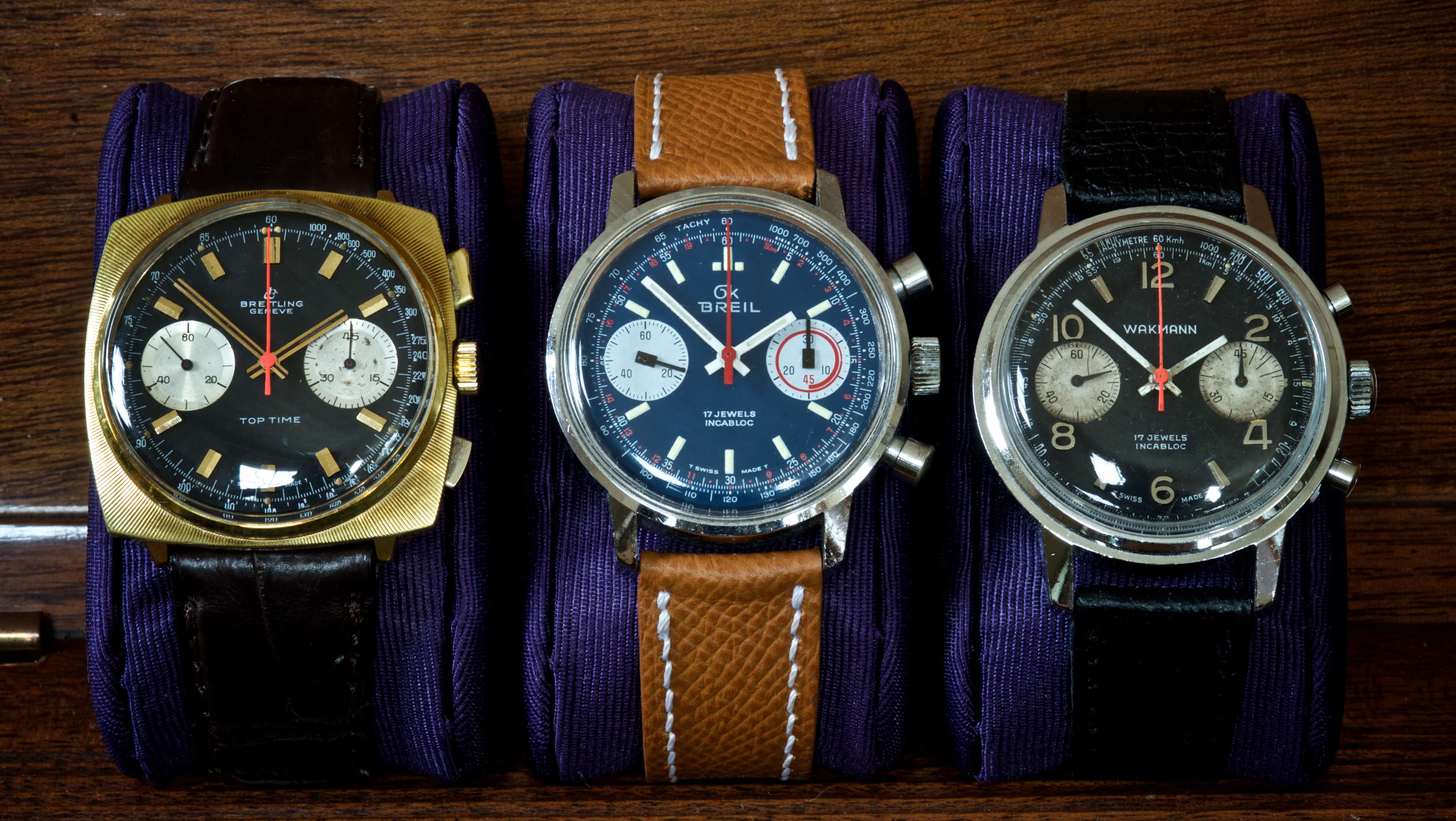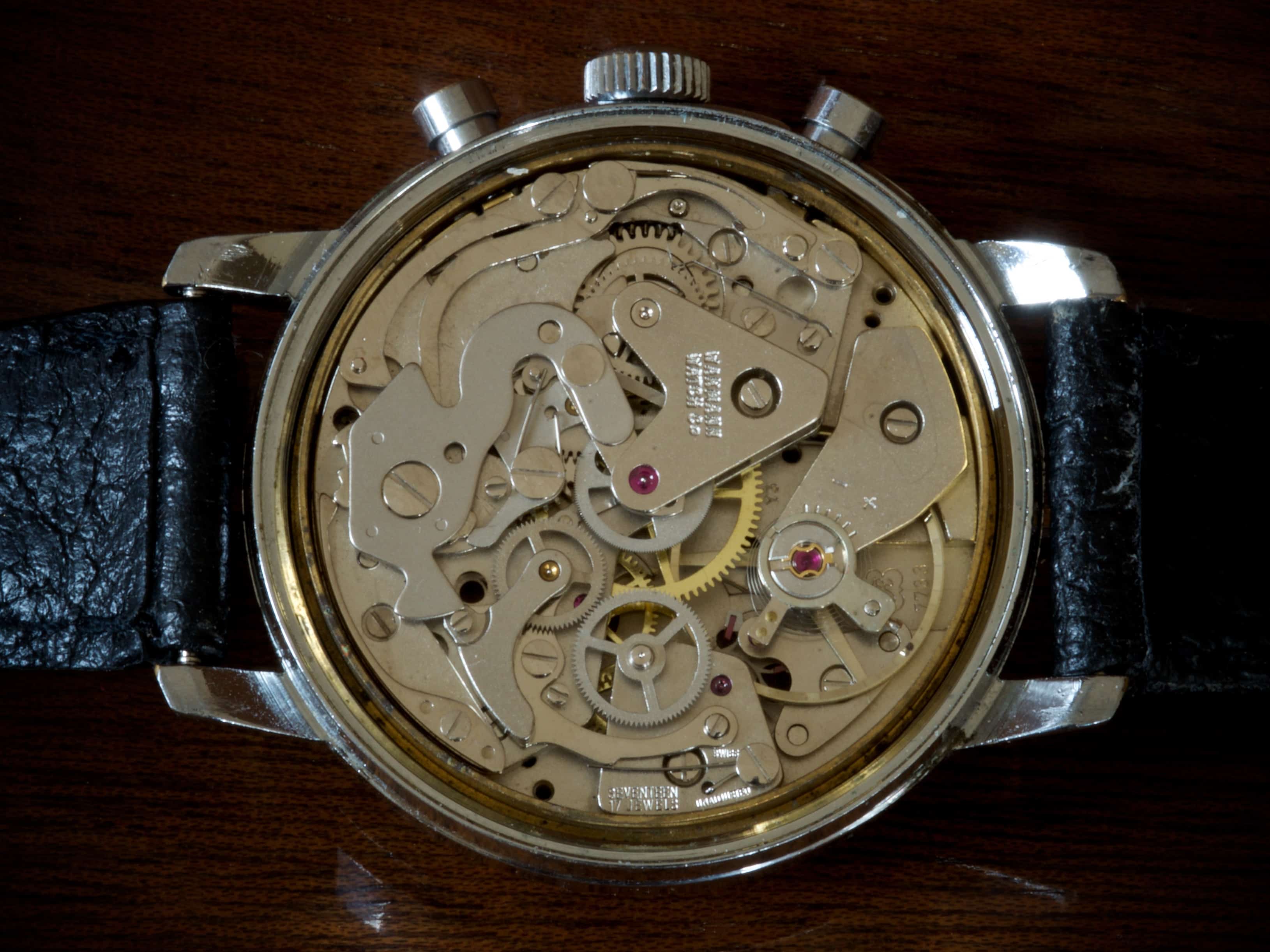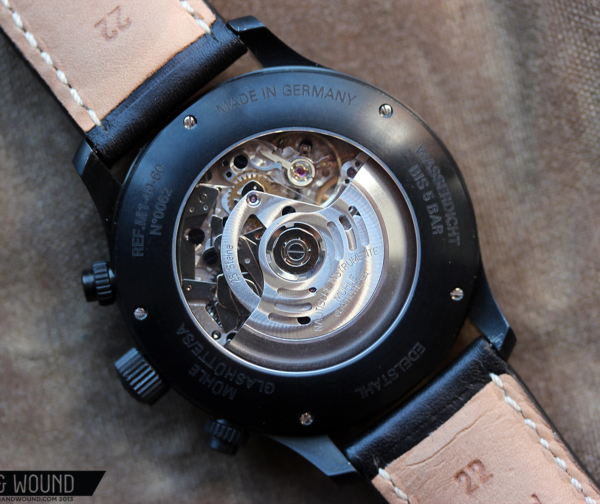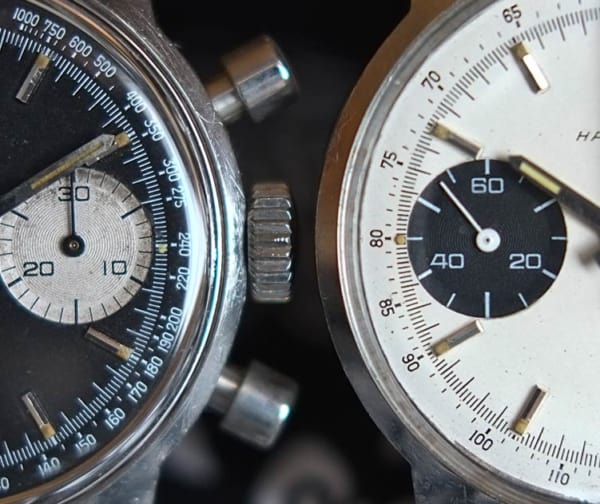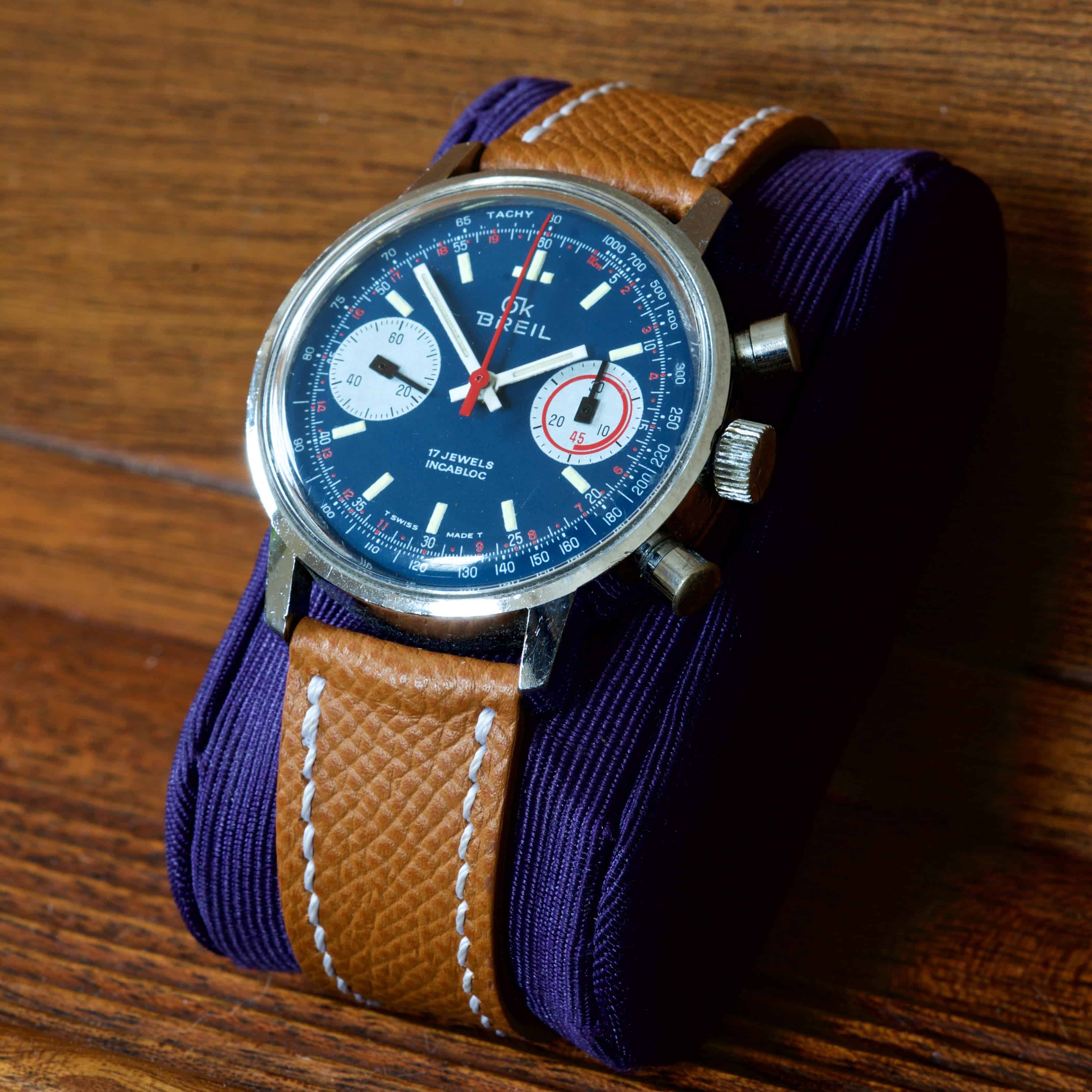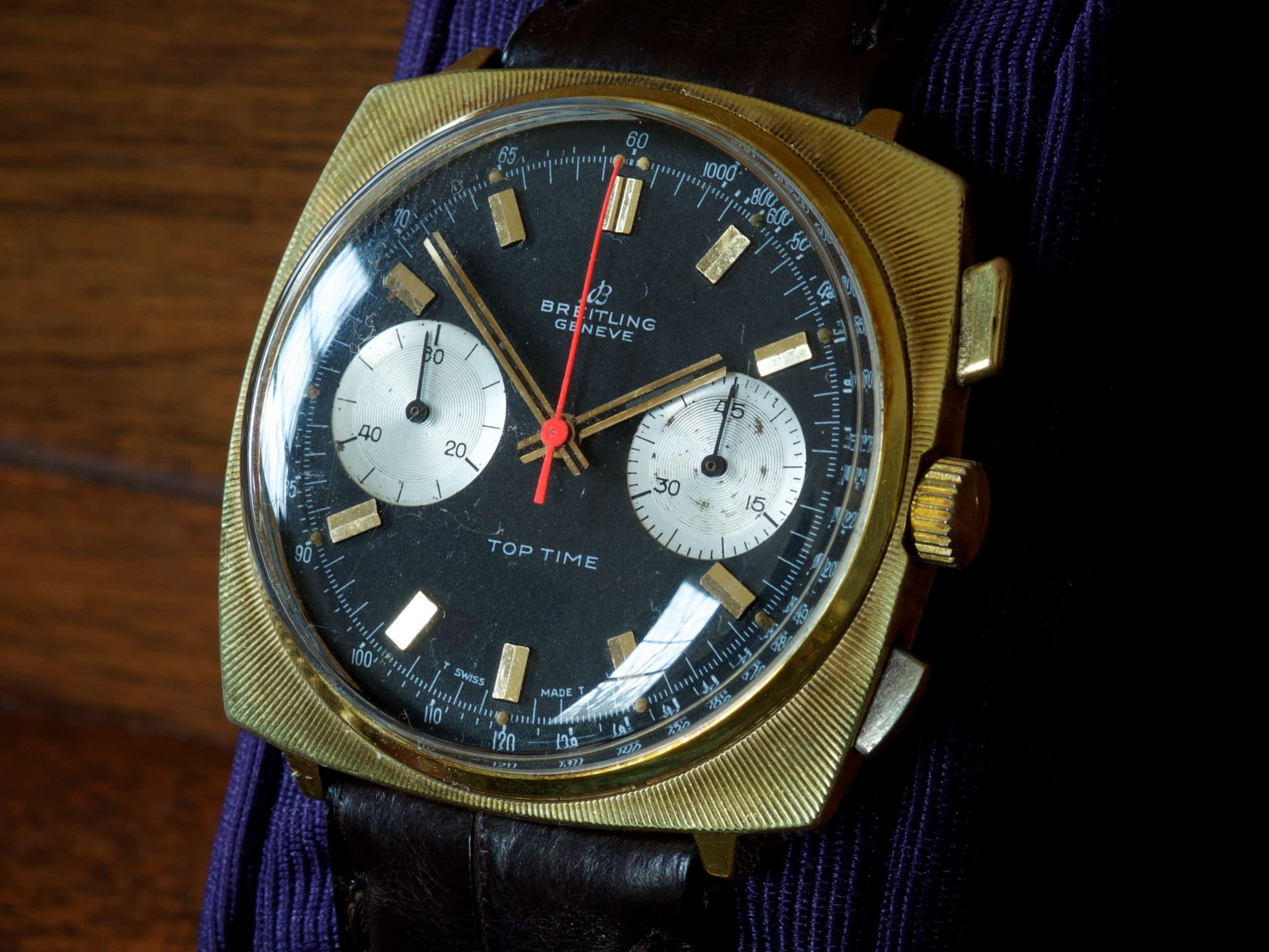The Valjoux 7730 is a hand-wound, dual-register chronograph movement produced from 1966 to 1973. The 7730 includes a small seconds sub-dial at 9:00, a jumping 30-minute counter at 3:00, and a central seconds counter. With no date complication, the crown moves between just two positions, a refreshingly simple configuration. Originating as an alternative to column-wheel chronographs, the 7730 employs an affordable cam-switching system that helped to democratize the chronograph watch during the middle of the last century.
The Valjoux 7730 served as the basis for customized, rebranded movements from the likes of Breitling, IWC, and Panerai, while stock 7730s wound up in watches from brands so obscure that the movement is the most recognizable thing about them. Search eBay for “Valjoux 7730” today and you’ll get a smattering of sporty 1960s and 70s chronographs from minor players like Briel, Exactus, and LIP up through better knowns like Hamilton, Clebar, and Zodiac; the latter now carry the caché and high price of having been built by Heuer. Even Sears & Roebuck sold 7730-loaded chronographs made by Heuer under the unimaginative brand name “Tradition.” As for their own chronographs, Heuer used the 7730 sparingly in their Autavia Ref. 7763 and Carrera 7753, though column-wheel movements like the Valjoux 72 (which use different Ref. #s) are just as common in those models.
SPECS: Diameter 31mm; Height 6mm; 17 jewels; 18,000 bph, 45-hour power reserve; Years: 1966-1973









 Featured Videos
Featured Videos




